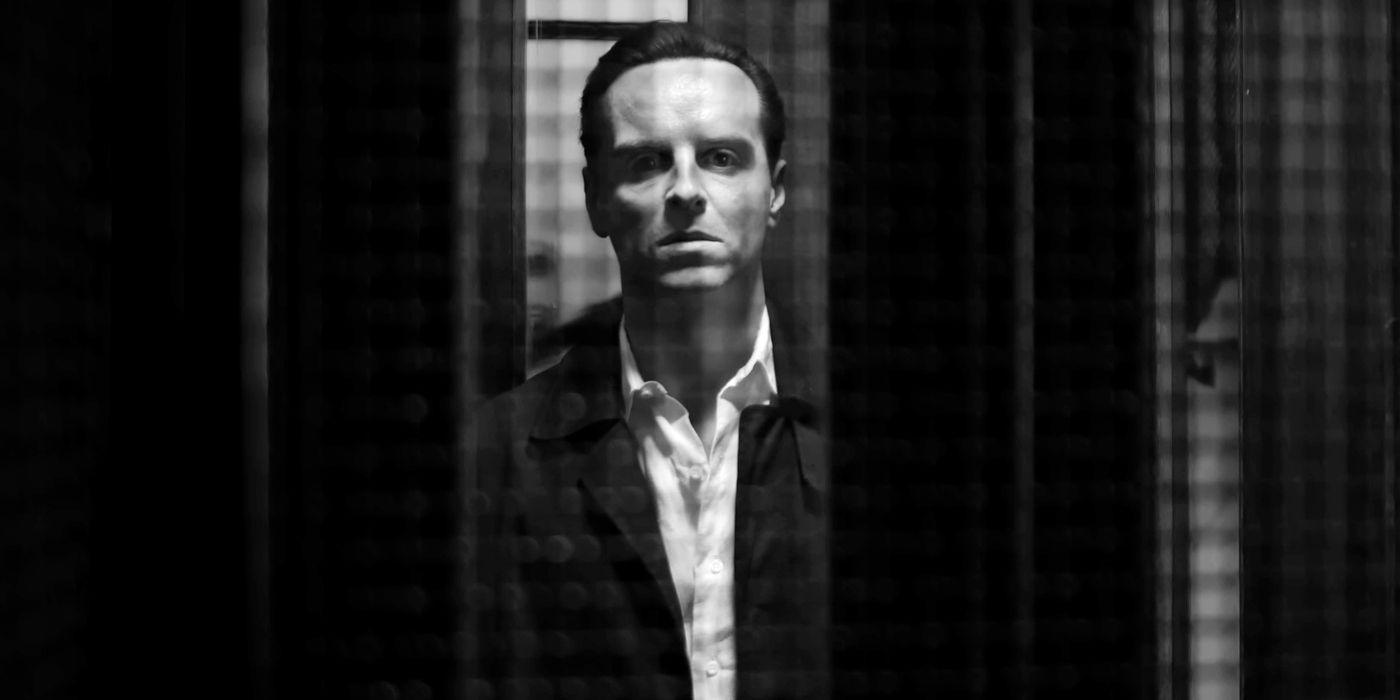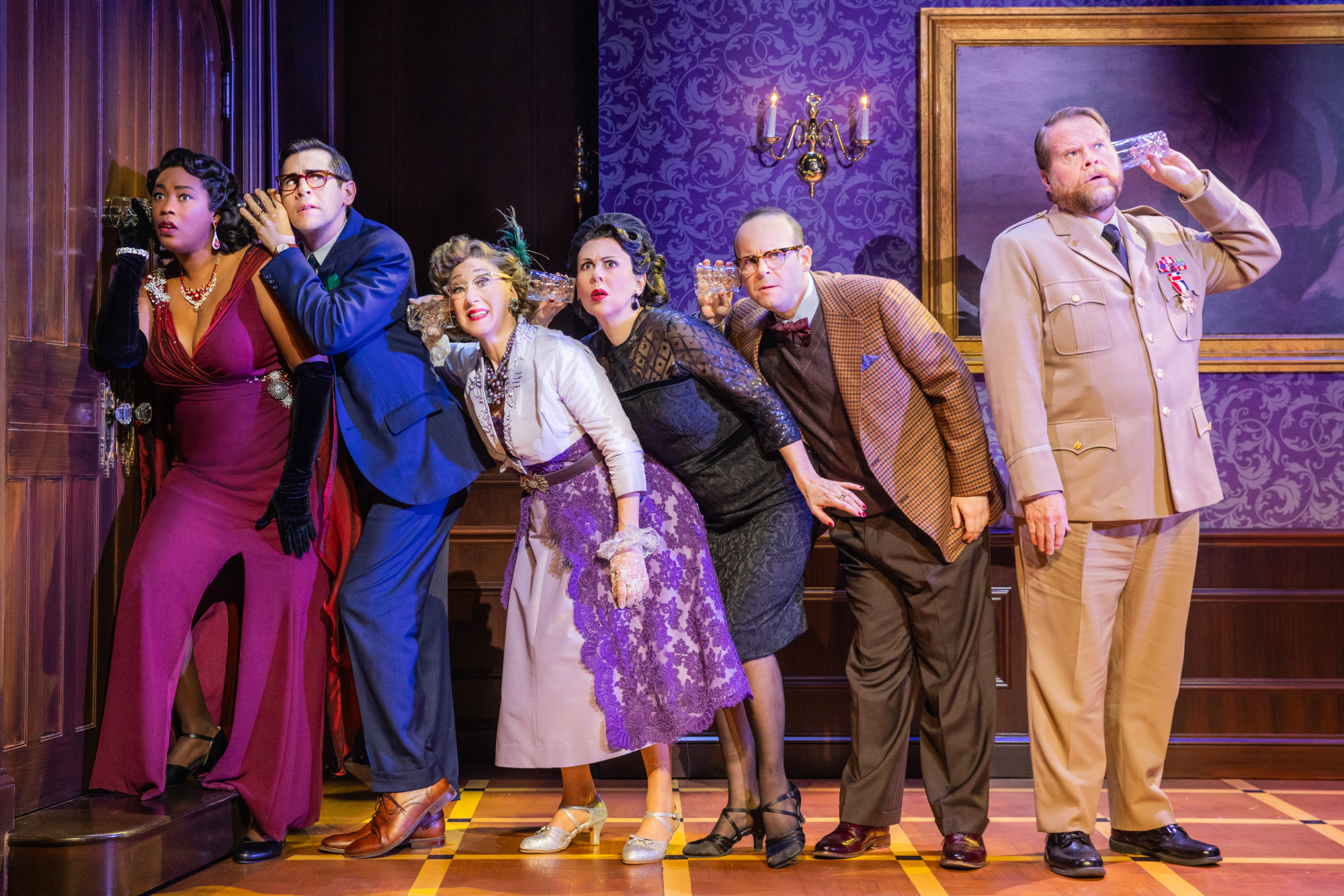Reviews
Netflix’s ‘Ripley’ Series Is a Gorgeous, Methodical Adaptation [Review]

Patricia Highsmith’s 1955 novel, The Talented Mr. Ripley, is a watershed thriller for its critique of class, its queer undertones, and its enduring legacy. The novel inspired multiple sequels, as well as several film adaptations, the most significant of which was Anthony Minghella’s Oscar nominated 1999 film of the same name.
Showtime commissioned a series based on the original book from writer/director Steve Zaillian back in 2021, but the project eventually went to Netflix. Now the eight episode limited series is out in full, and the new iteration is more sumptuous, more faithful to the source material, and more queer (from a contemporary perspective) than any other iteration.

All of Us Strangers’ Andrew Scott stars as Tom Ripley, an unassuming man living in a run-down shared housing project in Manhattan in the late 1950s. He doesn’t have a great deal going for him when he’s tracked down by a private investigator (Bokeem Woodbine) at the behest of Mr. and Mrs. Greenleaf (Kenneth Lonergan and Ann Cusack). They mistakenly believe he went to Princeton with their son and want to hire Tom to travel to Italy and convince their son, Richard “Dickie” Greenleaf (Johnny Flynn) to come home.
So off Tom goes, first spying on Dickie and his girlfriend Marge (Dakota Fanning) before staging an awkward introduction at the beach.
All of this table setting occupies the entirety of the first episode, which is a sign that Zaillian (who writes and directs all eight episodes) is moving at his own deliberate pace. The series is methodical, bordering on laborious, but the performances, Robert Elswit’s gorgeous black and white cinematography, and the increasing tension as Tom’s lies and plans steadily unravel, offsets the slow pacing.

Zaillian’s refusal to rush his adaptation bears fruit in two stand-out episodes – both of which (ironically) focus on murders. In episode three, Tom’s relationship with Dickie fractures and the pair take one final trip before Tom will ostensibly be cut loose. Here the queerness of Tom’s parasitic relationship with Dickie come to the fore as Zaillian includes a key sequence from Highsmith’s book in which the two men have extremely different reactions to a group of gay-coded acrobats performing stunts on the beach.
This brings the sexual tension between Tom and Dickie to a head as they venture out on the open water in a small boat. The long simmering resentment and unsaid frustration prompts each man to lash out – first verbally, then physically – in a more sustained and hurtful fashion than the Minghella feature.
Unlike the feature, however, Zaillian dedicates the entire back half of “Sommerso” to Tom’s disposal of the body and the evidence. It’s a tense, dangerous back half that relies, like so much of the series, on Scott delivering an enthralling solo performance.
It doesn’t hurt that Zaillian is able to expertly wring a great deal of tension out of Tom’s fear of the water, including harrowing moments involving an out-of-control speedboat, Tom’s efforts to sink the boat and his adoption of “Dickie”s identity as his own.

Things reach a new boiling point in episode five with the return of Dickie’s curt and confrontational friend, Freddie Miles (Eliot Sumner, the non-binary child of Sting). Unlike the queer coded performance by Phillip Seymour Hoffman in The Talented Mr. Ripley, Freddie’s gay status is canonical in the series, which lends the series another intriguing avenue with which to explore identity fraud and doppelganger status.
Like episode three, nearly all of “Lucio” is dedicated to the duo, but Zaillian’s insistence on repeated visual motifs (Tom going up and down the stairs; a long haired cat warily observing his passage in shadow; taxis going back and forth, etc.) helps to distinguish the action from “Sommerso.” It also provides a really enjoyable amount of (unexpected) black humour.

Circling Tom like sharks throughout the series is Marge, as well as Inspector Ravini (Maurizio Lombardi), the police officer assigned to the case when “Tom” (Dickie) goes missing after the boat ride. Both Marge and Ravini act as antagonists to Tom’s anti-hero and although Marge isn’t afforded much to do other than act wounded and be suspicious of Tom, Fanning excels at delivering Marge’s barbed accusations. Ravini is more objective, though it is evident early on that he finds “Dickie” (Tom)’s behaviour abrasive and his answers evasive.
Audiences familiar with Highsmith’s source material and Minghella’s adaptation know that the story’s pleasure is derived less from what happens than watching Tom struggle to stay one step ahead while finally living a life of luxury. In addition to the gorgeous chiaroscuro cinematography, Ripley acts as a compelling travelogue of Rome (and later Venice): even when Tom’s palazzo is coated in blood, or the rain washes away evidence on cobblestone streets, the European setting is undeniably beautiful and enticing.
It’s easy to get swept up in Tom’s desire to be part of this opulent world, much of it thanks to Scott’s performance. The Irish actor effortlessly delivers a performance that vacillates between sociopathic, entitled, desperate, and infantile. It’s a cunning balance; one that anchors the slow burn series and sustains it across eight episodes.
For those willing to buy into the fantasy, Ripley is an escapist vacation worth sinking into.


Reviews
‘Clue: A New Comedy’ Stage Play Is a Slapstick Slasher That Lovingly Adapts Hasbro’s Board Game

The national tour of ‘Clue: A New Comedy’ remixes the classic murder mystery with farcical physical comedy and impassioned old-fashioned sensibilities.
“It’s all part of the game.”
There’s a strong relationship between mischievous murder mysteries and the horror genre. Murder mysteries inherently hinge upon death – it’s baked into the name – so it’s not surprising that horror has embraced this secretive subgenre and really emphasized the murder in murder mysteries. Murder mysteries have been popular in pop culture for nearly a century. However, there’s been a recent renaissance on this front with playful films like Knives Out, A Haunting in Venice, Bodies Bodies Bodies, the Scream franchise, and the prominence of the true-crime genre and armchair detectives. That being said, an underrated and evergreen source of murder mystery hijinks that’s entertained audiences for 75 years is Hasbro and Parker Brothers’ Clue.
Clue has experienced many permutations over the years, including Jonathan Lynn’s 1985 cult classic film and several stage adaptations. In a new dawn where board game and toy IP are at an all-time high, a new stage adaptation of Clue has been put together by Sandy Rustin, with additional material by Hunter Foster and Eric Price, and directed by Casey Hushion. Hushion’s Clue: A New Comedy, which is in the middle of a national tour, effortlessly harkens back to vaudevillian silliness and broad laughs, while it simultaneously explores darker genre impulses and intrigue. It’s the perfect way to nostalgically celebrate the ’80s movie, but also remind audiences why Hasbro’s upcoming cinematic remake is long overdue.
Hushion’s Clue is an adaptation of Lynn’s ‘85 film, but it still brings many original ideas and revisions to the table so that this doesn’t just feel like a stripped down version of the movie. Clue: A New Comedy finds immense pleasure in how it translates the game’s rules so that it functions as a faithful adaptation of the game and the feature film, while it also becomes a fun, fresh entity that’s a living hybrid of both. In Clue: A New Comedy, blackmail functions as the story’s central mystery, just as it does in the board game and cinematic adaptation. Each color-coded houseguest has terrible secrets that they don’t want getting out, which becomes the impetus for the growing body count.
Clue is a comedic character study and this stage play presents well-defined individuals who are easy to identify and connect with, despite their one-dimensional nature. Mr. Green (John Shartzer) is the cast’s real standout, but there’s not a single weak link among Clue’s eight central players. Clue’s best moments are the ones when the whole cast gets to bounce off of each other and revel in the group’s chaotic energy. The play’s ‘50s McCarthyism setting also adds an extra layer of mistrust, paranoia, and subterfuge to the equation that still feels timely in its own way. Farcical, broad wordplay – especially from John Treacy Egan’s Colonel Mustard – are a delight and reminiscent of an old-fashioned radio play when it comes to Clue’s jokes, timing, and dialogue.
Beyond Clue’s script lies some exceptional physical comedy, particularly from Shartzer’s Mr. Green. There are broad group reactions that play out in unison for mass comic effect, as well as lighting cues that brilliantly accentuate punchlines and become a solid running gag throughout the 90-minute show. There are playful movement exercises that are expertly choreographed and verge on interpretative dance. Clue adopts a real Scooby-Doo energy to the production, especially when it comes to its scene transitions. Clue even indulges in a “multiple door chase sequence” that taps into the right energy for this degree of slapstick. To this point, there’s an absolutely brilliant slow motion sequence that’s a highlight of the show and adeptly incorporated.
Clue’s characters are its secret weapon, but stellar production elements help elevate the stage play to something truly special. There’s really powerful set design by Lee Savage that evokes a creepy, cozy Haunted Mansion aesthetic that’s the right atmosphere for this murder mystery tale. Clever design decisions result in rotating walls and rooms that economically get the most out of the stage’s environment. Clumsy execution of these elements would quickly sink Clue and ruin its crescendoing quality. They’re seamlessly handled, as are Ryan O’Gara’s evocative lighting design and Michael Holland’s jauntily creepy musical cues. All these elements work together to make sure that Clue is as visually entertaining as it is well-acted and written.
Clue: A New Comedy goes all-in on its laughs. That being said, the play’s death scenes are actually creepy and immaculately orchestrated with all the finesse of peak genre cinema. There are genuine slasher vibes present that pulse through the show’s pervasive slapstick silliness. It’s a testament to the sheer artistry of craft in Clue that both of these extremes work as well as they do. Clue also shrewdly embraces the infamous multiple ending angle that helped give Lynn’s feature film a smart extra meta layer to its storytelling. It’s fun, different, and takes advantage of the medium of theater to great effect. It’s also the satisfying culmination of a story that gets progressively manic, unhinged, and verges on collapsing in on itself by the end – but in the best way possible. Clue pushes boundaries with tone and control like an expert puppet master.
Clue: A New Comedy hits all the right notes and succeeds as a breezy piece of theater that celebrates whodunit hijinks, broad buffoonery, and wicked wit. It’s Agatha Christie meets Frasier. Clue is a show that definitely prioritizes comedy over horror and suspense, but there’s enough style in this production to properly sell the production’s more evil impulses. It’s unlikely that anyone will be genuinely frightened, yet the play will still keep audiences on the edge of their seats and eagerly anticipate who’s responsible for Boddy Mansion’s copious corpses. Clue: A New Comedy is the best way to experience the Hasbro and Parker Brothers classic before its next cinematic adaptation proves that murder and mayhem aren’t just a game anymore.
Go to Broadway.org to see if ‘Clue: A New Comedy’ will be coming to your area.


Photo by Evan Zimmerman for MurphyMade













You must be logged in to post a comment.